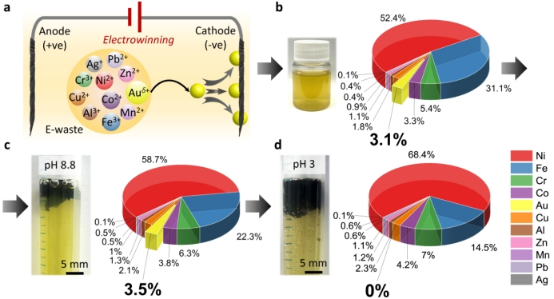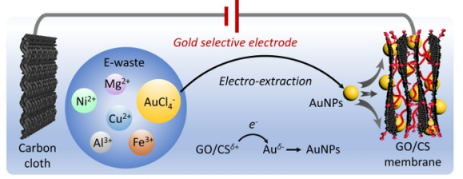In December 2023, Nobel Prize winner, foreign academician of the Chinese Academy of Sciences, Professor Kostya Novoselov of the National University of Singapore was invited to attend the unveiling ceremony of the Sustainable Innovation Technology Research Institute of Guangdong University of Technology, and signed a memorandum of understanding (MOU) with Guangdong University of Technology regarding the establishment of the Joint Laboratory for Nobel Prize Winners in Intelligent Materials and Green Electrochemistry, and his PhD student and postdoctoral researcher, Dr. Yang Kou, also joined the School of Light Industry and Chemical Engineering at Guangdong University of Technology as an excellent young talent under the "Youth Thousand Talents Plan". After nearly a year's effort, the joint laboratory has become a high-level international platform for jointly training graduate students and postdocs. Recently, Dr. Yang continued his collaboration with Professor Konstantin at the Sustainable Innovation Technology Research Institute of Guangdong University of Technology and made a major breakthrough in the application of two-dimensional materials in gold ion extraction and electronic waste recovery, publishing two influential papers in the international top academic journals "Proceedings of the National Academy of Sciences of the United States of America" (PNAS) and "Advanced Science", injecting powerful momentum and providing solid scientific research support for the construction and development of the Guangdong University of Technology Nobel Prize Winner Joint Laboratory.
The first research achievement, titled "Graphene / chitosan nanoreactors for ultra-fast and precise recovery and catalytic conversion of gold from electronic waste", was published in the international top academic journal PNAS. Associate Professor Yang Kou is the first author of the paper, with Professor Konstantin and Professor Daria Andreeva as corresponding authors, and Professors Qiu Xueqing and Zhang Shanqing from the School of Light Industry and Chemical Engineering at Guangdong Industrial University also provided valuable guidance and important support for this research.

Figure 1. Graphene oxide/chitosan composite material for recovering gold ions from metal waste liquid
In the research work published in PNAS (as shown in Figure 1), the research team developed a nanoscale composite material self-assembled from two-dimensional graphene oxide and one-dimensional chitosan macromolecules, which can serve simultaneously as a capture agent and reducing agent for gold ions. This innovative material is capable of simultaneously recovering and reducing Au³⁺ and Au⁺ ions from electronic waste to form solid Au⁰. More importantly, this process does not require the application of any voltage, relying solely on the chemical adsorption kinetics of gold ions in the graphene oxide/chitosan nanospace and their chemical reduction at multiple binding sites. This synergistic effect in ion adsorption makes the extraction efficiency of gold extremely high. Its extraction capacity reaches 16.8 g/g for Au³⁺ and 6.2 g/g for Au⁺, which is more than ten times that of any existing gold adsorbents. The extraction efficiency exceeds 99.5 wt.% (the current limit is 75 wt.%), and effective extraction can be achieved even at gold concentrations as low as 3 ppm. This innovative research on gold recovery not only improves the efficiency and sustainability of metal recovery from electronic waste liquids but also marks a major advancement in the application of two-dimensional composite materials in natural resource protection.

Figure 2. Graphene oxide/chitosan composite film for gold ion extraction electrodes
Based on the above research, the second research achievement, titled "Two-dimensional electrodes from functionalized graphene for rapid electrochemical gold extraction and reduction from electronic waste", was published in the international top academic journal "Advanced Science". This paper discusses the important findings of the new graphene oxide/chitosan composite material as a gold recovery electrode (Figure 2), with Associate Professor Yang Kou as the first author and Guangdong University of Technology as the first completing unit.
 current position:
Home
>
News & Notices
>
News
>
Content
current position:
Home
>
News & Notices
>
News
>
Content